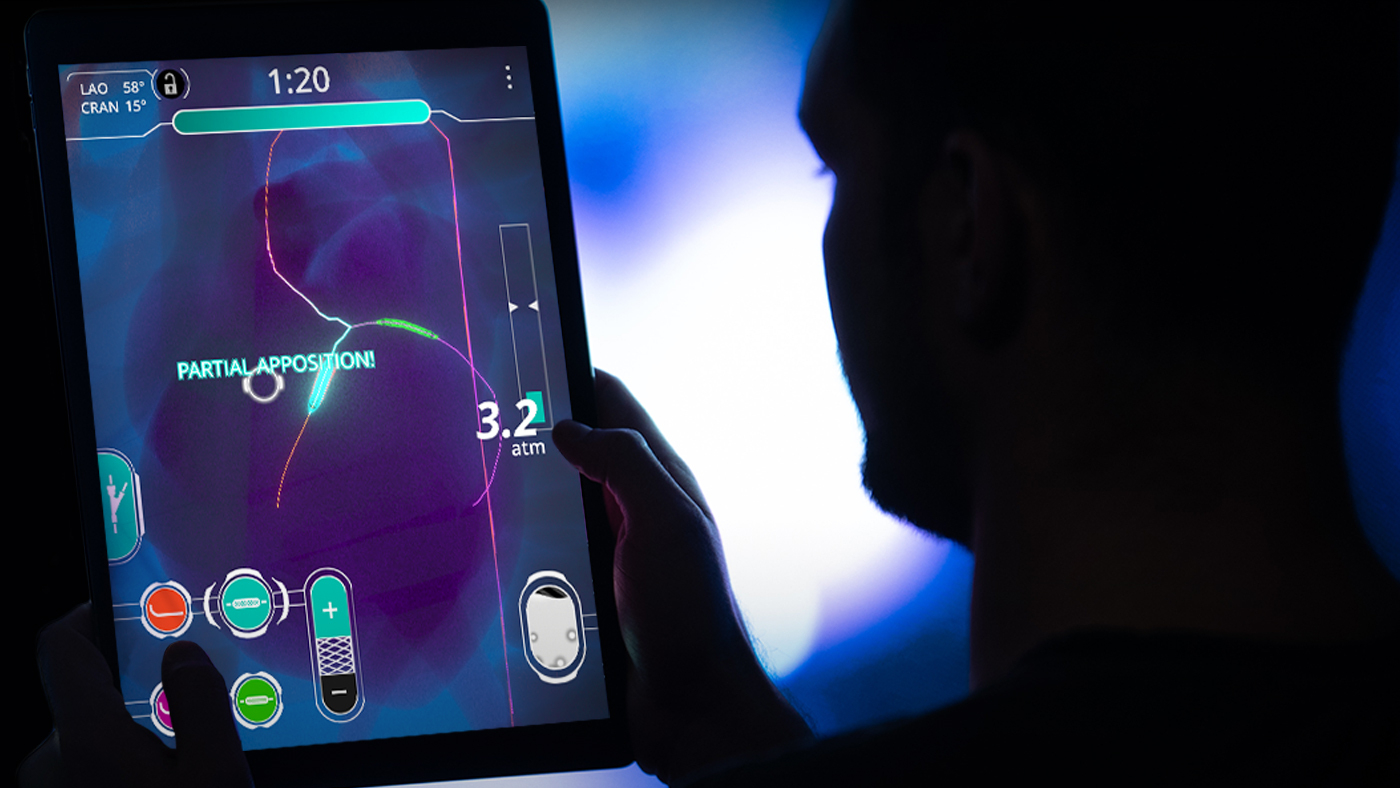
Designer on Cardio Ex
Level Ex. Jan 2019 - Nov 2021
Level Ex is a Chicago-based company that makes free-to-play mobile medical games. Their business model is to build experiences that are both appealing and professionally relevant to veteran doctors, then build additional content into those games that feature the products of their clients - medical device companies and pharmaceutical companies.
In early 2019 I began working on Cardio Ex, which was only a few months away from launch. Cardio Ex is a complex puzzle game that closely simulates the physics of interventional cardiology. Players advance wires into the vasculature of the heart, then deploy tools down those wires, carefully managing the sizing and positioning of their tools as they drill through calcified plaque, suction out embolized thrombi, and stent closed perforations in the heart's tissue. A binary tree of nodes tracks the status of every millimeter of the heart's vasculature, from how much plaque is present, to the hardness of that plaque, to the width of the vasculature, the presence and status of the player's tools, and so on.
I was one of two designers on the project. My initial responsibilities were to design levels by editing our node-based level layouts to add in complications like stenosis, thrombosis, and dissections at various points in the heart, and I ended up designing over half the levels in the game. I also introduced totally abstract “Puzzle Heart” levels that took on unrealistic shapes such as snowflakes and flames as palette-cleansers between realistic levels. We weren’t sure how doctors would react to these, but metrics showed that they were actually among our most played, despite being totally optional.
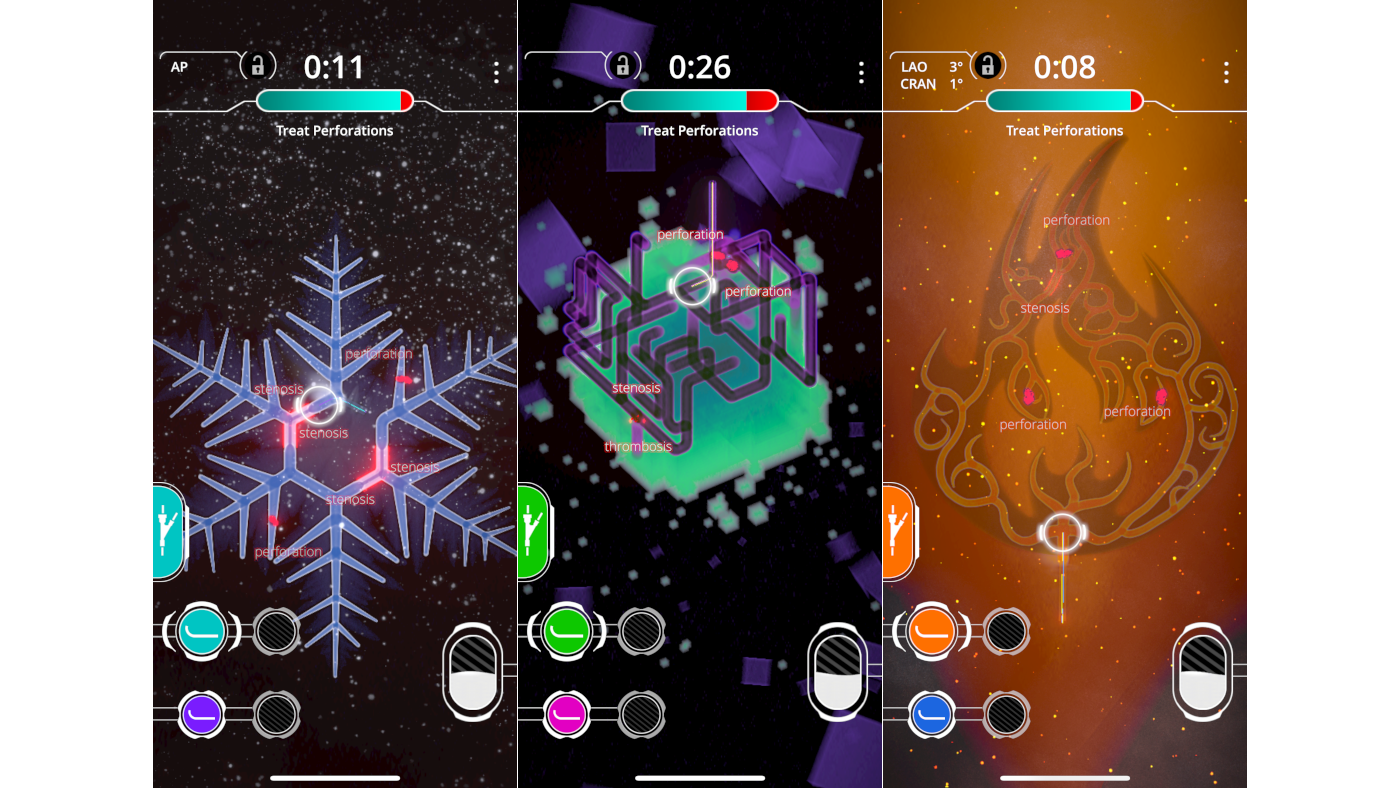
Bifurcation Lesions
Post-launch, I was the only designer on Cardio Ex, and I led a unit of levels based on Bifurcation Lesions. The goal was to allow doctors to perform the “Kissing Balloons” technique, in which one stent is threaded through another at a branching point in the bloodstream, and both are inflated in tandem by two balloons. The main difficulty here was conveying information to the player about the relative pressure and position of two balloons simultaneously. After several iterations, my engineer, Scott Binter, my artist, Kat Anderson, and myself landed upon a “double needle meter” execution.
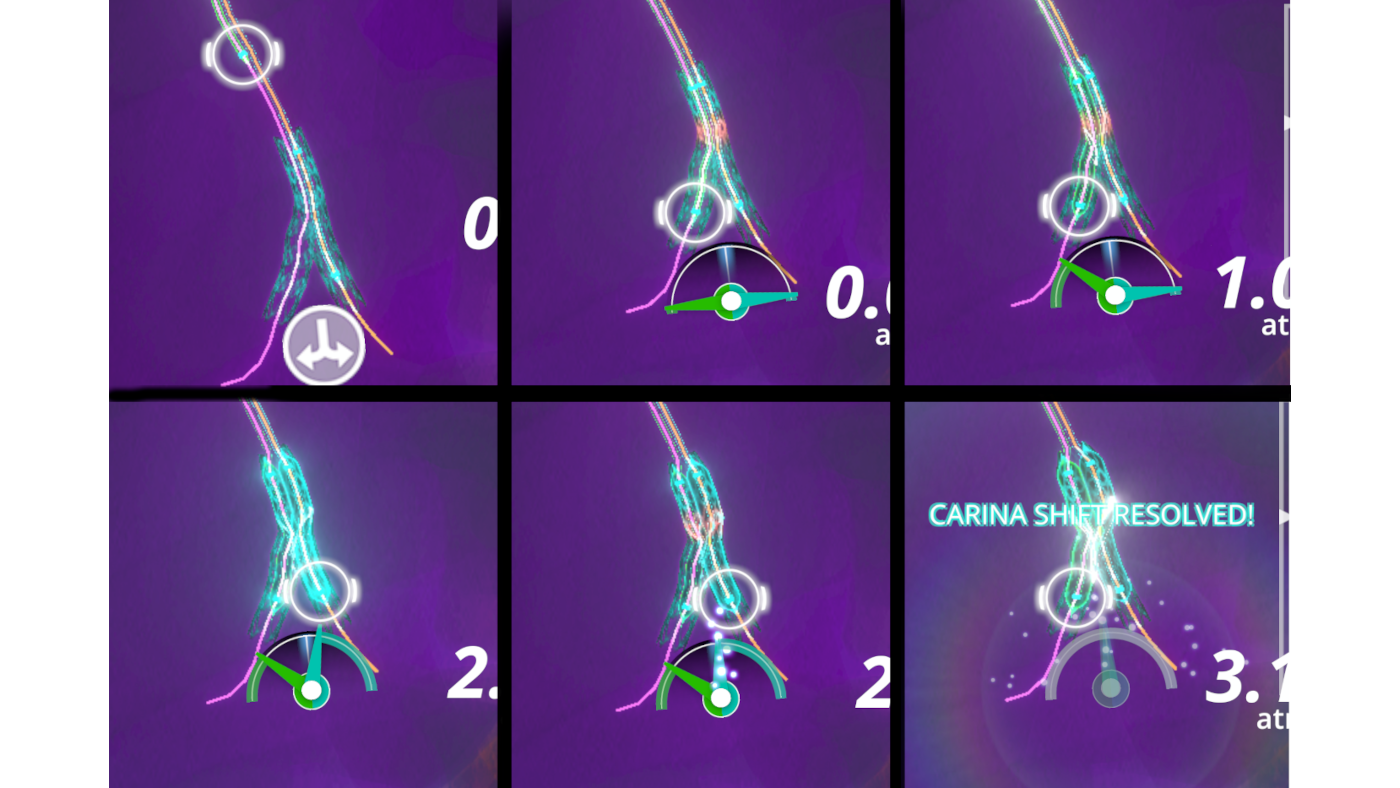
This UI element was a relatively lightweight way to convey all the information we needed while also giving us a visual way to tell the player “You’re doing great - just keep going!” at every step of this complicated sequence of maneuvers. Not only does the double needle meter perfectly convey the state of your balloons, it elegantly reflects the direction the carina is being shifted by those balloons. Adding a complex, floating UI popup in the middle of an already complex simulation puzzle game sounded extremely inelegant at first, but it plays so smooth in practice! I’m very happy with how this turned out.
Intravenous Ultrasound
I also led a unit of levels showcasing the Philips intravenous ultrasound (IVUS) catheter. I spoke with the client to learn their requirements, concepted new game features to meet those requirements, then vetted those designs with Art, Sound, and Engineering before building the levels that would use these features. This was a challenging unit for multiple reasons. First, in normal Cardio Ex levels, complications are revealed automatically when contrast dye is run through the heart. This renders the information learned from IVUS totally useless. Thankfully, one of the other tools Phillips was asking us to showcase was iFR (instant wave-Free Ratio) a tool which in real life visualizes pressure loss to doctors through a series of dots.
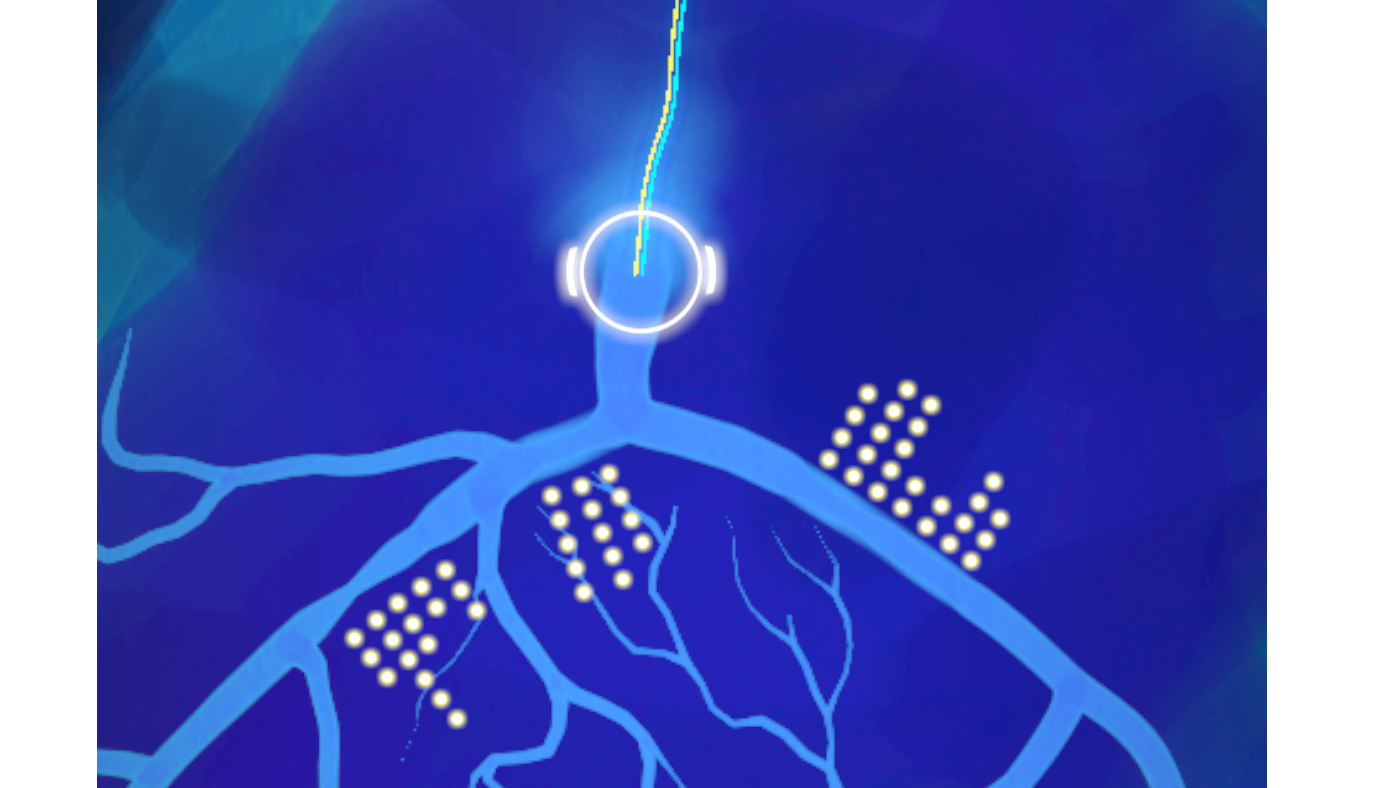
IFR allowed us to disable the normal complication-revealing feature without making players feel like we were “nerfing” their normal capabilities. It gave the levels a sense of mystery, and did a good job of motivating use of the IVUS.
The second, far larger, reason why this unit was difficult, was because an ultrasound catheter images the shape and hardness of the plaque in your arteries... But plaque in our simulation was purely tracked numerically - there is no physical plaque in our levels at any point in time. We could have tried to fake the experience through the use of reference imagery, but our client required the player be able to use IVUS freely, both pre and post-treatment, to see the effects of their actions. Thankfully again, an engineer at Level Ex, Matthew Yeager, had already spent weeks working on ultrasound imaging for another project, and was able to build us a tool which translated the information of our node tree into an ultrasound image.
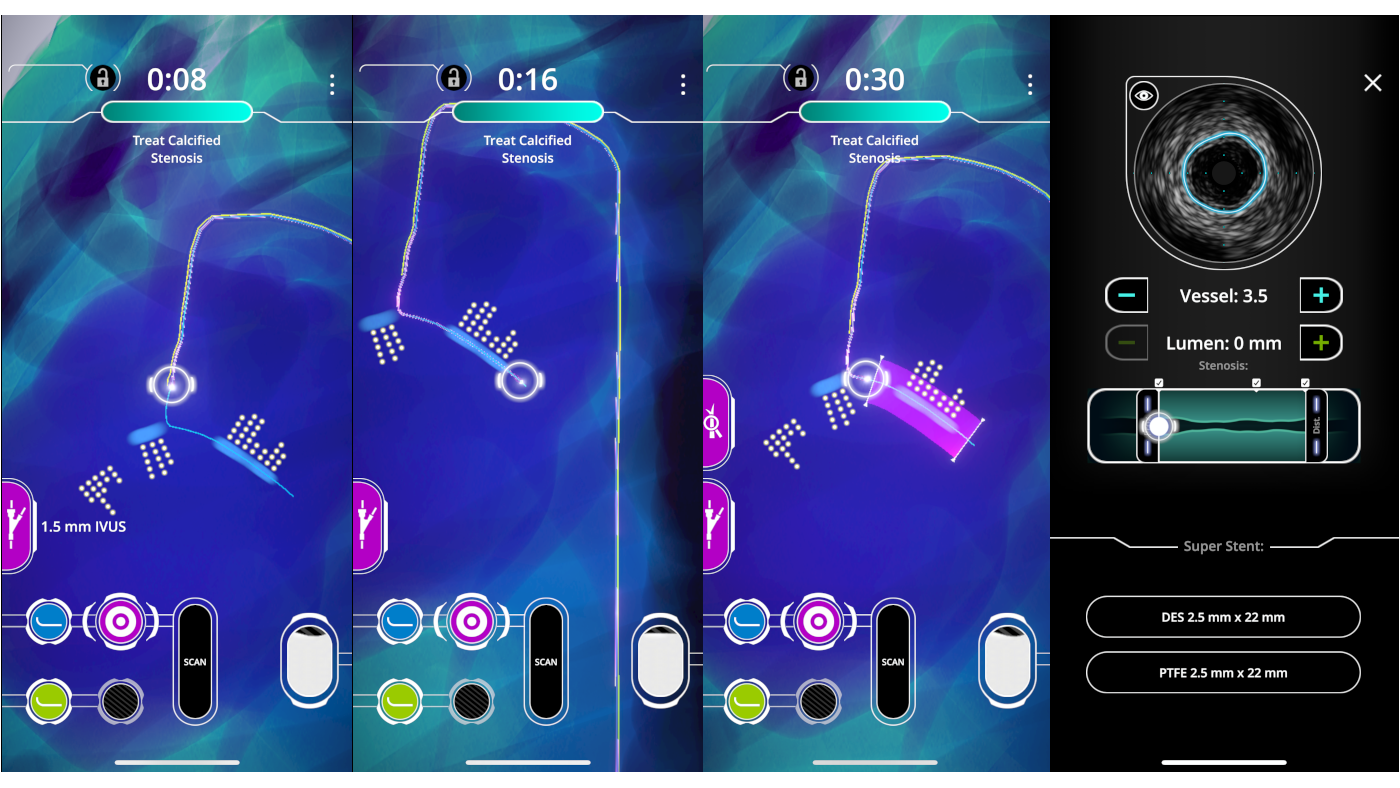
Above is the process of making an IVUS scan. The player equips the IVUS tool, proceeds distally to a point beyond a suspected complication, scans proximally back towards the top of the heart, then opens their IVUS scan with the new button that appears just above tool selection, on the left-hand side of the screen. After they complete an IVUS scan, players are able to scrub left and right along the length of their scan, measuring vessel and lumen diameter at each point. They are also able to shift the position of two markers to select where they want the proximal and distal ends of their stent to be. The player’s measurements determine the dimensions of the stent they can auto-equip by pressing either of the bottom buttons.
Cardio Ex Refactor
After Cardio Ex’s release, Level Ex decided to substantially revise parts of the game in response to declining user metrics. The former lead designer returned to the team and, after both of us studied the problems we were seeing, we came to the following conclusions:
- It was too easy to cause additional complications. Dissociated stents in specific (when a piece of medical equipment is accidentally lost in the bloodstream) were extremely difficult for doctors to solve without causing several additional problems. Put simply, fairly easy levels could become totally unmanageable if you made certain mistakes.
- To solve this, we simplified the rules governing how plaque reacts to inflated balloons and stents. This made hardened plaque easier to treat and also made it impossible for players to cause perforations.
- We also made dissociated stents instantly fail the level. This caused players to fail more often, but also didn’t waste minutes of their time with a problem we realized they wouldn’t have fun solving.
- Related to the above, we decreased the amount of screens players needed to advance through before restarting levels after a failure.
- We also redesigned almost all of the tutorials in the game to offer more clarity.
- Linear level progression was causing us to lose players. We had levels that hit a variety of different difficulty levels, but the linear nature of the level progression meant that if you couldn’t complete the “boss” levels at the end of a unit, you couldn’t proceed.
- To solve this, we adopted a nonlinear progression system. In the system we adopted, players were given levels at random to complete. These random levels were pulled from a pool of levels that they qualified for.
- Qualification was based on if they had played certain levels earlier in the sequence, which allowed us to guarantee that players had, for instance, played the tutorial for the atherectomy drill prior to seeing any atherectomy levels. And we could ensure they saw beginner atherectomy levels before they saw intermediate or hard ones.
- Also, players were given the option to skip whatever level they wanted to, so they no longer needed to get stuck on “boss” levels.
- Our game felt empty. We acknowledged that there simply wasn’t a lot to hold a player’s interest other than doing the next puzzle. We had a mobile game that wasn’t adhering to conventional mobile retention tools like achievements or cosmetics. It was questionable whether adding these features would really motivate doctors to play more, and these cosmetics were not a source of monetization for us, but they were still seen as a good opportunity to see if doctors responded well to these types of motivators.
- We created a “Player Card” that players could customize with cosmetics
- We created a list of achievements players could complete to earn cosmetics
- We exposed our level progression pools to the player and gave them further rewards when they had completed every level in each pool.
- We gave players a daily reward if they played three levels in a single day, with scaling rewards for each (nonconsecutive) day they did this
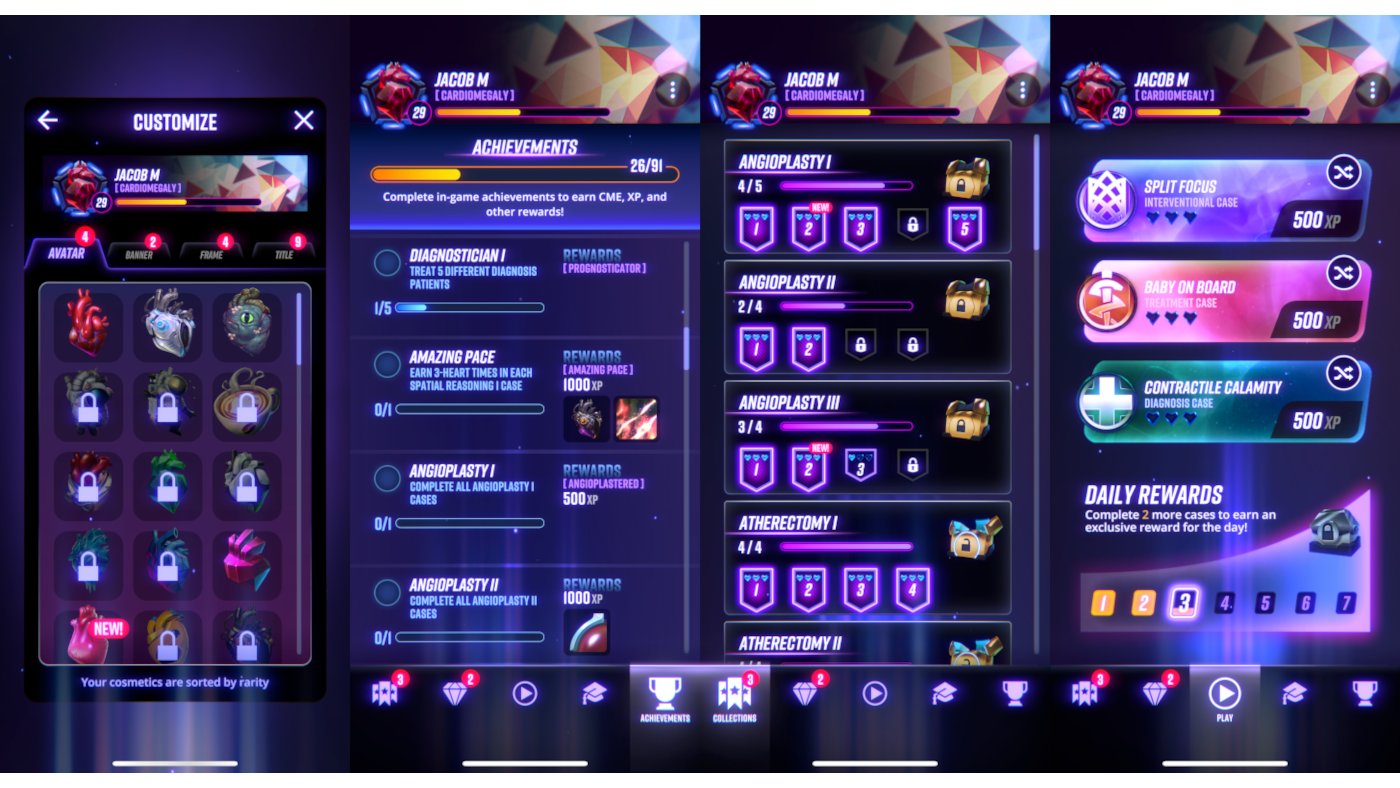
Towards the end of the refactor, the lead designer left Level Ex to pursue another opportunity, handing over the reins to me for the final three months before launch. It was over these three months that most of the implementation of the above features was completed, including all cosmetics and achievements, the revision of our tutorial system, and the implementation of Diagnosis and Treatment levels. Diagnosis and Treatment were more clinical gameplay modes that focused on decision-making puzzles that tested doctors’ knowledge of medicine. These levels were the only levels in the refactor not designed by myself. Instead, they were designed by the medical team, and I helped them revise their levels to make them easier to complete without losing medical accuracy.